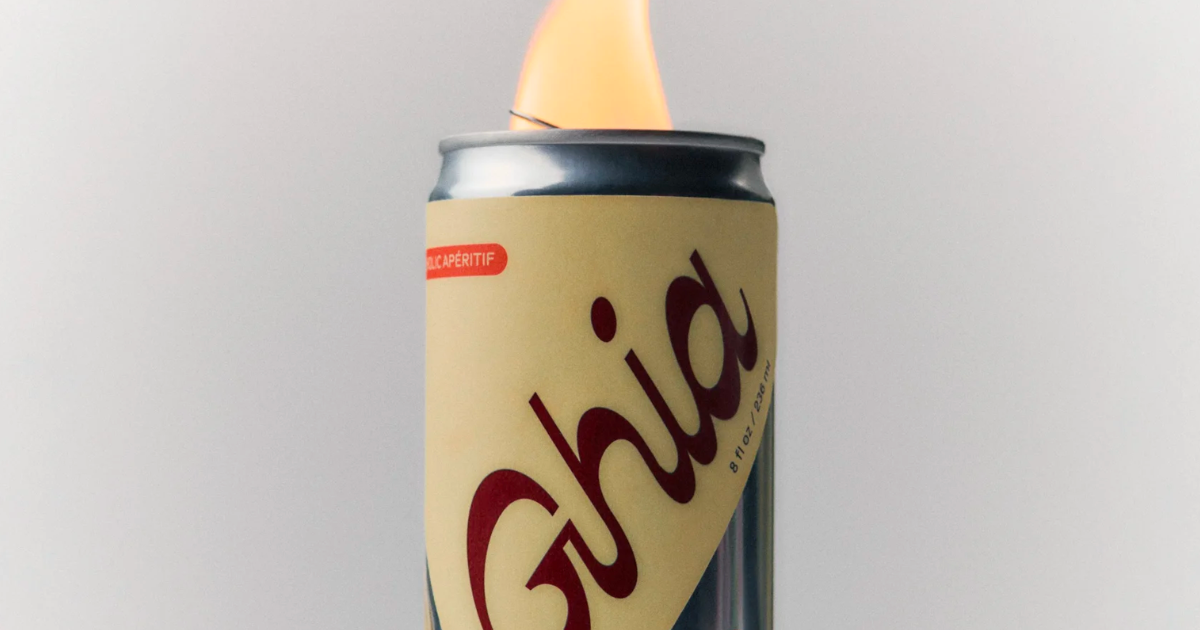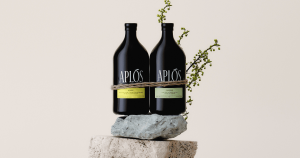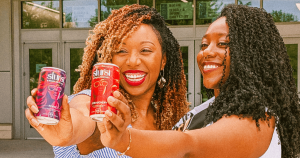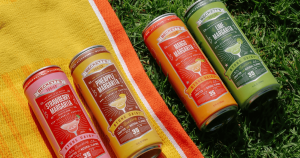As 2023 draws to a close, we’re reflecting on the top non-alc trends of the year. So, we scoured our own database to identify six that will have the most staying power into 2024 and beyond. From relaxation bevs to zero proof tequila, here’s what shows no signs of stopping.
1. Ready-to-drinks
2023 was the year of the RTD, with brand after brand launching canned mocktails. Ghia led the pack with the year’s buzziest launch, a Sumac & Chili spritz, their fourth RTD. Newer entrants like Guinep are scaling with even more unique flavors. (If you’re curious to learn more about these brands, check out our recent Q+As with Ghia founder Melanie Masarin and Guinep founder Aaron Wisniewski.)
We also saw beverage brands enter our space via RTD mocktails. In March, Recess launched their Zero Proof Craft Mocktail collection, their first expansion into the non-alc category. With this collection, Recess established the first college sports sponsorship of its kind as the official mocktail of the University of Southern California Trojans. More recently, Aura Bora released a zero proof olive oil martini.
RTDs are particularly strategic in the alcohol alternatives category for two reasons. First, they remove the friction of learning how to prepare (even simple) non-alc cocktails. Second, they give consumers the opportunity to try a smaller quantity before committing to a full bottle. RTD singles are some of the best sellers at our retail store, Spirited Away. Other retailers like Foxtrot and The Goods Mart also seem much quicker to stock these than full-size bottles.
2. Celebrity endorsements and ventures
The alcohol alternatives industry saw a surge in celebrity endorsements and ventures in 2023. These built on early high profile collaborations like Bella Hadid’s involvement with Kin Euphorics and Katy Perry’s with De Soi. Most recently, Lyre’s announced a partnership with world-renowned DJ David Guetta, who took an undisclosed stake in the company. With over 100 million fans across various social networks, Guetta’s involvement is expected to significantly boost the visibility and appeal of Lyre’s.
Earlier this year, Formula 1 champion Lewis Hamilton launched a non-alc blue agave spirit named Almave, and singer-songwriter Zayn Malik took a significant role as the co-owner and Chief Creative Officer of Mixoloshe. Before those announcements, Danny Trejo introduced a non-alc tequila under his new brand, Trejo’s Spirits, and Mingle Mocktails welcomed beverage disruptor and reality TV star Bethenny Frankel as a strategic advisor and ambassador.
The increasing involvement of celebrities in the non-alc space underscores the industry’s growth and potential. Their influence can significantly shape consumer perceptions, drive brand awareness, and potentially introduce a new audience to the benefits of alcohol alternatives. But, there are risks. Some Dry Atlas readers have voiced that celebrity endorsements and ventures are nothing more than superficial cash grabs. The challenge for these brands will be to ensure authenticity in their offerings, resonating with their celebrities’ values.
3. Relaxation beverages
Functional beverages have been a core pillar of non-alc since Kin Euphorics launched in 2018. Now, we’re seeing the rise of a particular segment within functional: relaxation beverages. When seeking to recreate the effects of drinking alcohol, non-alc consumers appear to be more interested in unwinding than in decreasing their inhibitions and socializing.
Case in point, the beverage trend that swept TikTok this year: the Sleepy Girl Mocktail. These mocktails, first popularized by creator Gracie Norton, combine various calming ingredients. The star component of Gracie’s variant is Moon Juice’s Magnesi-Om dietary supplement, which has gained significant traction since her first video went viral. Her mocktail also includes pure tart cherry juice and Olipop’s Lemon Lime Spritz, though many TikTokers have customized the recipe to their liking. Their only goal? Achieving a good night’s sleep.
In 2023, new brands took note of the consumer need to unwind. See the launch of Allay Wines, a duo of functional non-alc wines packed with calming ingredients. Wine alternatives invite consumer comparisons to “the real deal”—and, for many, that means relaxation in addition to taste. If Allay can deliver on their relaxation promise, they get closer to meeting consumer expectations overall. See also the increasing popularity of THC beverages, below.
4. THC as an alcohol alternative
Alcohol consumption among younger generations is on the decline, but this doesn’t equate to a complete rejection of recreational substances. THC is emerging as a popular alternative, particularly among Gen Z consumers. According to a Brightfield Group report, 37% of this demographic now prefer it over alcoholic drinks. This trend aligns with Gallup’s findings, which show a significant reduction in alcohol consumption among young adults, paralleled by an increasingly favorable view of marijuana.
Beverage brands like Artet and Cann are carving out a unique niche in the THC market, appealing not just to regular cannabis users but also to those seeking ways to decompress without alcohol. It’s not just a DTC play; Total Wine & More, a US retailer with 260 stores nationwide, has begun selling THC-infused drinks in select stores. The drinks, which include brands like Cantrip, contain varying amounts of THC, with some having as much as 50mg per can.
While there’s excitement about THC beverages, there are also concerns, particularly regarding safety for teenagers. Unlike alcohol, there’s no federal age requirement for purchasing THC-infused drinks, although many states have implemented their own legislation requiring buyers to be over 21. Regulatory scrutiny is creating a complex landscape for these brands, which must navigate a patchwork of state-specific laws. Despite these challenges, as THC legalization and normalization continue to spread, it seems to be broadly reshaping consumption habits and cultural norms for socializing and relaxation.
5. Hop seltzer
Hop seltzer is on the rise. Some tailwinds: beer’s waning dominance (which could make room for beer-adjacent bevs), the prevalence of grain-free diets, and the popularity of subtly flavored carbonated beverages like La Croix.
On the product front, see Brooklyn Brewery’s investment in hop seltzer brand Hoplark, which creates a joint partnership to distribute Hoplark’s hop tea and its “0.0” line of sparkling waters. More recently, Revolution Brewing (Illinois’ premier independent brewery) launched a hop seltzer as its first non-alc SKU: Super Zero sparkling hop water. The brewery said they crafted Super Zero to cater to those who occasionally abstain from alcohol but still desire a hop-infused flavor.
Here’s a recent deep dive on the category from Beer Crunchers.
6. Non-alc tequila
Mid-year, we said non-alc tequila was poised to become a breakout star in the rapidly expanding world of non-alcoholic spirits. Since then, Formula 1 champion Lewis Hamilton launched a non-alc blue agave spirit (Almave) and Mindful Brands, the company behind Ceder’s non-alc gin, launched a non-alc tequila brand (Soldadera). Soldadera has two products: Blanco, a silver tequila alternative and Café, a coffee variety. Most recently, Seedlip announced an agave-inspired product, Notas De Agave—just its fourth launch in eight years. With drinks giant Diageo at the helm, you know their product decisions are informed by the best market intel available. (Here’s our Q+A with Seedlip founder Ben Branson.)
What sets non-alc tequila apart is how well it pairs with spicy ingredients, mimicking the bite traditionally associated with alcoholic beverages. Additionally, in the US, its alcoholic counterpart has been the fastest-growing spirits category in recent years. As consumers venture into the non-alc realm, many are seeking to replicate their favorite cocktails without the booze, so it makes sense they’ll reach for non-alc tequila.






